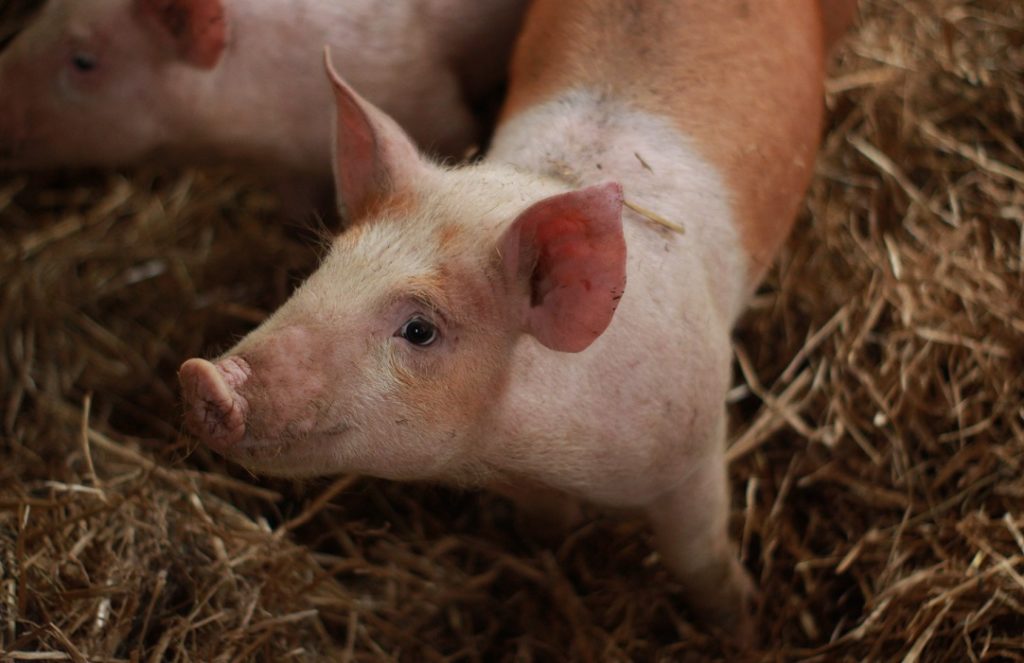
Goat is one of the livestock that has the Latin name capra Aegragus hircus. As is known, goats are livestock that have many advantages. The meat has a fairly high sale value and is valued both at home and abroad. Goat livestock is a type of activity that is beneficial and enjoyable. Business that is clearly producing without speculation. Other benefits of raising goats in addition to cultivation, goats can also be used as food ingredients that have high nutritional value for human life.
Care and maintenance of goats is tricky. But for the location of the village or village to keep goats have a lot of convenience because in the village there is still a lot of vacant land covered with grass as food. Only with 1 year of harvest for livestock, 5 goats consisting of 2 males and females can produce 25 heads. In addition to the fast harvest period, goats are very easy to produce coffers of money. Goats are very easy to sell to agents and markets. Especially if we have goat cattle whose quality is healthy and fat. Buyers will come by themselves.
In addition to making money or investing, goat meat is also a very high nutritious food and very rich in benefits in the life and human body. Of course, by having these animals the intake is easy to get. Another advantage is that goats are animals that are very easy to adapt to the conditions and the environment. So that in a fast time goats can be easily tamed and maintained, and do not need to prepare a special location.

Zeolites are minerals that contain hydrated aluminosilicate with soluble base and antacid earth. Zeolites have such huge numbers of advantages in numerous divisions, particularly horticulture all in all. There are numerous examinations have discovered the advantage of zeolite in farming. Geochemists and mineralogists watch that zeolites are the eventual outcome of established volcanoes into volcanic rocks, sedimentary rocks, and variable rocks which in this manner experience enduring because of the impact of warmth and cold with the target that zeolite minerals finally encompassed. These stones are diminished to light blue in concealing. Mineralogists express that zeolites contain more than 30 normal minerals, for instance, Natrolite, Thomsonite, Analytes, Hendalites, Clinoptilotites, and Modernities.
Zeolite properties have been found by inspects. Accordingly, ponders found that zeolite contained up to 70% of the high extent among silica and aluminum oxides. The examination also found the morphology of the penetrable structure on regular zeolites that prepared to hold and desorb substances. Zeolite moreover has the ability to specific adsorption of immense cations. This is a result of the proximity of the molecule size that described as strong Coloumb collaboration with the structure of the zeolite. Their physicochemical properties essentially depend upon the substance of the zeolitic stage in the stone, for instance, cations exchange structure and nature of corruption. Customary zeolites are penetrable structures, the basic porosity of them is directed by the micropores of pearls, and the helper one – by the transitional pores and macropores.
Research in different nations shows that giving zeolites gives great weight gain. This might be brought about by particle trade control of the grouping of ammonium particles in the stomach related tract. In any case, a few examinations show a sign of higher protein focuses. The impact of blending zeolite in with creature feed is as per the following.
1. improve creature development and Weight gain by expanded nourishment change rate efficiencies (less feed required per pound of Weight gain)
2. A strong liking for ammonium gives unrivaled scent control and a sound situation. Additionally ensures the infiltration of smelling salts into the circulatory system.
3. Reduction of Scours, acidosis, looseness of the bowels, enteritis and other gastrointestinal illnesses
4. Improved bone development
Following quite a while of effective field testing many feed providers and end-clients have remembered zeolite for creature feed added substances (around 2% to 5%) in their feed flexibly program. There is a general improvement in development and wellbeing of these creatures subsequently.
Thank you for reading our article. Keep in touch with Nusagri to get more information about zeolite. Nusagri.co.id is the pioneer in exploitation and processing of zeolite minerals in Indonesia used in Agricultural and multi sectors. Nusagri exported tons of zeolite for many countries including India and Malaysia. Please check our website and social media for further information about zeolite.








